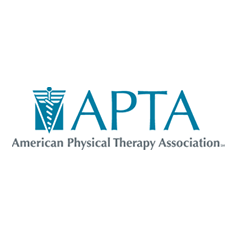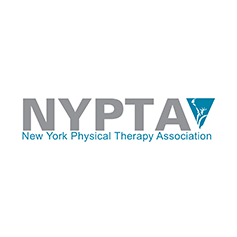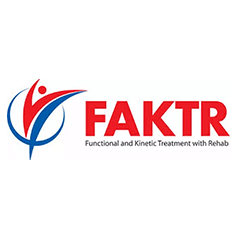A Growing Interest in Medical Marijuana
A complete guide to chronic neck pain and the disturbing sensation of a “crick”
With relaxed state laws and wider availability, use of cannabis and cannabinoids is increasing throughout the United States. PTs and PTAs need to know how patients can be affected in both positive and negative ways.
Johanns Gammel, PTA, works with a patient who has multiple sclerosis (MS) that produces leg pain that often is “horrible.” The patient’s legs twitch and spasm, causing them to jump even when the patient is seated in his wheelchair. Those episodes can make it difficult for Gammel to follow a PT’s plan of care. Medical marijuana (MMJ) helps ease his symptoms, says Gammel, a physical therapist assistant (PTA) who co-owns EDGE PT in Paramus, New Jersey.
After using marijuana, “sometimes, the spasms, twitches, and pain subside within 1 minute,” Gammel says. “This allows me to stretch his legs, which are tight from the disease and from his being in a wheelchair. The effects of MMJ help him get the proper manual therapy in accordance with the PT’s plan of care in order to be able to move.”
The sale and consumption of marijuana for both medical and recreational uses are growing rapidly. It’s estimated that the market for legal cannabis in the United States grew by 74% from 2013 to 2014 alone—up to $2.7 billion in sales, from $1.5 billion. In 2016, sales exceeded $6.7 billion.1 What’s more, the total market value if all states were to legalize marijuana could top $36.8 billion. That’s more than $3 billion more than current sales for the organic food industry.2 The entire market for marijuana in 2016—legal and illegal—was estimated at $53.3 billion. (See “Understanding the Terminology: Marijuana, Cannabis, and Cannabinoids” on page 18.)
The states in which marijuana is legal or decriminalized is an ever-changing patchwork. One compilation lists 8 states as having legalized marijuana for both recreational and medicinal use.3 Twelve states, as of late 2017, have both medical marijuana and decriminalization laws. Thirteen states have legalized psychoactive (affecting the mind) medical marijuana, while another 13 have legalized only non-psychoactive medical marijuana. One state has decriminalized possession. Conversely, in 3 states marijuana possession and sales for any use are illegal and prohibited.
However, while states are moving in the direction of decriminalization or legalization, the federal government, through the Drug Enforcement Administration (DEA), continues efforts to eradicate marijuana.4 In its most recent report, the DEA said:
The DEA is aggressively striving to halt the spread of cannabis cultivation in the United States. To accomplish this, the DEA initiated the Domestic Cannabis Eradication/Suppression …The DCE/SP began funding eradication programs in Hawaii and California in ….
In 2015, the DCE/SP was responsible for the eradication of 3,932,201 cultivated outdoor cannabis plants and 325,019 indoor plants for a total of 4,257,220 marijuana plants. In addition, the DCE/SPaccounted for 6,278 arrests and the seizure in excess of 29.7 million dollars of cultivator assets.
Budding Interests
One need only to look through medical articles or talk to health care providers at conferences to realize that MMJ is becoming a widely accepted area of study for pain management and other applications.
Medical indications for cannabinoids include neurological conditions such as MS, muscular dystrophy (MD), and Parkinson disease (PD)—all conditions addressed by physical therapists (PTs). (See “The Health Effects of Cannabis” on page 22.)
That’s why a growing number of PTs are looking at (or revisiting) the use of MMJ by patients, based on published evidence and patient experiences. An increasing number of PTs and PTAs also are advocating for its use in some instances, saying it may be safer than are drugs such as opiates, muscle relaxants, and anti-inflammatories.
“The relaxing effect that marijuana has on our nervous system allows these patients to be stretched properly and in a more comfortable manner, and it can allow them to perform some therapeutic exercise that will help them function,” says Gammel. “It’s also being used to control pain for many orthopedic conditions, such as arthritis, tendinitis, disc herniation, and general back pain.”
Still, both medical professionals and patients are questioning whether cannabis and cannabinoids are the solution. They’re asking “Can it really help?” “What are the side effects?” “Is it safe?” and “Is it legal?” These are all questions for which PTs should be prepared.
Charles Ciccone, PT, PhD, FAPTA, says many patients are ahead of the curve compared with what clinicians know and are doing. It’s not uncommon, he says, for patients to have bought marijuana on the street to help with their pain management, but its use has grown greatly with the approval of MMJ. “I think physical therapists are saying, ‘If you want to try this and you think it would help, it might be worth considering as part of a comprehensive rehabilitation plan.'” Ciccone led a session titled “Morphine to Medical Marijuana: A Tale of Two Systems” at APTA’s NEXT Conference and Exposition last year.
Ciccone is quick to say that no PT should advise a patient to use any chemical. But PTs, he says, should be able to provide education on what’s happening among patients and on the reported benefits of marijuana as regards chronic pain, spasticity, and chemotherapy-induced nausea and vomiting. Ciccone cautions that marijuana can have negative effects on the cardiovascular, respiratory, and nervous systems. Therefore, he says, patients need to consult their physician before considering marijuana use.
From Legal to Illegal and Back Again
Until 1937, cannabinoids (a class of diverse chemical compounds that act on cannabinoid receptors in cells that alter neurotransmitter release in the brain) were widely used and prescribed throughout the United States and Europe. It wasn’t until the government stepped in that it became impossible for medical practitioners to prescribe them. (See “A Brief History of Cannabis” on page 20.) Even though the legal pendulum is swinging back, many still see a cloud over its use.
A big headscratcher for some is that, while many patients say marijuana helps control pain and conveys other benefits, the federal government counters that it has no medical use whatsoever. Ciccone says he doesn’t understand how there can be such complete disagreement.
“The problem we’re going to continue to face is the stigma against it,” he observes. “And it’s not just the stigma but the fact that the legal restrictions at the federal level still are so severe—it’s a Schedule I substance.” This means it’s among the DEA’s most highly regulated substances, drugs, or chemicals. (See “DEA Substance Rankings” on page 26.)
Chris Wilson, PT, DPT, DScTT, an assistant professor at Oakland University in Rochester, Michigan, operates a clinical practice focused on chronic disease management for cancer patients. He’s been dealing with MMJ for a while. Wilson agrees with Ciccone’s assessment. “A big stigma is that medical marijuana is historically an ‘illicit drug,'” he notes. “Even though it’s legal in states such as mine, resistance remains from a lot of patients. But if patients are having poor pain control or functional status because of the amount of discomfort they’re in, I think a conversation about medical marijuana use is warranted.”
The Word From the Field
Cannabis can offer benefits beyond pain relief. Wilson explains, “We use Marinol, which is approved by the Food and Drug Administration. It’s a man-made tetrahydrocannabinol, or THC, which also is a naturally occurring component of marijuana. It has been approved for nausea and vomiting. A lot of my patients say it helps them relax and alleviates their cancer-related pain.”
He believes cannabis has created a stir in the physical therapy world because of PTs’ growing role in the management of chronic disease.
“In my experience, many of the patients who have been prescribed MMJ were prescribed it for a chronic disease,” Wilson says. “In the past, physical therapy was not as integrated into cancer care, treatment of COPD [chronic obstructive pulmonary disease], or treatment of other chronic conditions such as back pain. But PTs now are more integrated into the treatment of these patient populations.”
Mike Pascoe, PhD, an assistant professor in the physical therapy program at the University of Colorado Anschutz Medical Campus, says his interest in the growing use of MMJ stems from 17 years working in substance abuse prevention among youth.
“I attend many lectures on marijuana on my campus,” says Pascoe, whose PhD is in neurophysiology. “Many PTs and PT students with whom I interact are uninformed about federal and state laws and the process for researching marijuana.” He encourages PTs to review reports describing who is seeking and recommending treatment with MMJ.
Laura Borgelt, PharmD, is a pharmacology professor, also at the University of Colorado, who lectures DPT students about marijuana—how cannabis may be helpful, how it can be harmful, and how it works in the body.
Because PTs monitor the pain scale and patient movement, marijuana is “very relevant for a PT,” she says. “Pain is a major symptom these students will be treating, so marijuana is an important conversation piece.”
Advocating for Cannabis
Gammel has become an advocate for cannabis and cannabinoid use to help patients. “I have some patients who have their medical cards and use marijuana for pain, and I have seen firsthand how it helps them,” he says. “Many people assume that marijuana is not safe but that prescribed opiates are safe. I am so happy that this belief gradually is changing as information about the medical benefits of marijuana is coming out.”
Vivian Eisenstadt, PT, MA, says that in addition to pain management, many people use MMJ for depression and anxiety associated with their illnesses. She is the chief executive officer of Vivie Therapy in Los Angeles.
“Marijuana helps many people I treat. In that regard, it’s on the same level as Vicodin or any other medication a physician has prescribed for management of physical or mental pain,” she says. “I have seen it considerably help patients with their health. I am very much in favor of legalizing it.”
Wilson recommends use of MMJ when patients in a hospital have uncontrolled bone pain or overall pain that’s not being sufficiently treated or managed by a current regimen, or when there is concern over potential side effects from traditional regimens.
What Should PTs Know?
Again, marijuana is illegal in some states. It’s legal for medicinal purposes only in others. It’s available in still other states for recreational use. This can make it challenging for PTs to know what’s legally permissible in their jurisdiction.
“The PT’s role is to point the patient to the evidence and apply the same standards to marijuana as to other medications,” Pascoe says. “For example: What risks accompany the potential benefits? What MMJ products have been through FDA approval-level studies?” (The answer to the latter question, he notes, is “none.”)
Gammel says that although neither PTs nor PTAs prescribe or recommend medications, marijuana use is something that needs to be addressed in health care circles as studies showing the drug’s benefits continue to be published and as increasing numbers of a physical therapist’s patients may be using it.
“Any time it has come up in conversation with patients, I always say they need to discuss it with their physician,” he says. “I only give some feedback about what I’ve personally seen, and I tell them that it’s an option for a lot of people.”
Over the past couple of years, Gammel has seen a big change in his patients who have used marijuana. “It affects people is a positive way. They seem happier,” he says. “Some of them have been in constant pain. Now they finally are getting some relief. I have noticed that, for some patients who are very anxious and depressed over what they’re going through, MMJ seems to put them in a much better mood and reduce their anxiety over their condition.”
Despite MMJ’s reported benefits, there are concerns. Vivian Eisenstadt doesn’t want a patient’s use of the drug to interfere with her ability to work safely and efficiently with him or her.
“Once in a while, I have a patient who writes on the intake form that he or she uses marijuana, and I can tell that something is off,” she says. During the evaluation, “I’ll ask a couple of questions, such as ‘How much do you take, and how often?’ and ‘How do you feel it affects you?’ I sometimes notice their response time is slowed and they aren’t focused. In such cases, I tailor my treatment to their behavior and discuss with them the possibility of their not taking the drug before sessions if it’s going to lower the quality of our time together.”
This is really no different from the way she views other medication, she adds. For instance, a patient who is medicated after a total knee replacement might act similarly unfocused.
“As a PT, it is my job to navigate the situation with compassion and professionalism,” Eisenstadt says. “I find the effects of marijuana on my patients to be much more tolerable than I do the behaviors of people who come to me on heavy narcotics such as OxyContin or Vicodin. The key with any drug is to find the dosage that helps you without impeding you. Drugs should be an aid, not an escape. I am all for legalizing marijuana. As is the case with alcohol, however, there are those who are responsible with it and those who abuse it.”
Wilson agrees that PTs must make sure the patient who uses marijuana can participate safely in the therapy session, “just as if he or she came in with some other type of pain medication. You must be extra vigilant that their safety is being ensured.”
Pascoe raises another concern regarding MMJ. It is difficult to dose marijuana consistently, he says, due to potential imprecision or inaccuracy between the labeled strength and the product itself.
“This is what is so different between commercialized products and pharmaceutical-grade meds. This even is the case for strains of marijuana plants,” he notes. “They cannot advertise a specific percentage of THC—only a range. For edible products such as gummies and hard candies, the distribution of THC throughout the batch is not uniform, which leads to further inconsistencies in the product. And consider this: You’re trying to ingest 10 milligrams of THC from a 100-milligram cookie. Are you going to be able to eat a tenth of that cookie?”
The accuracy of labels in edible medical cannabis products is a similar concern. For example, 1 study conducted in 2014 found that, of 75 edible products purchased in San Francisco, Los Angeles, and Seattle (baked goods, beverages, candy, or chocolate), only 17% were accurately labeled regarding THC content. (Accuracy was defined in the study as being within 10% of the labeled amount.) THC content was under-labeled in 23% of the products and over-labeled in 60%.5
Products that are over-labeled “may not produce the desired medical benefit,” the researchers noted, while products containing more THC than labeled are “placing patients at risk of experiencing adverse effects.” The researchers added, “Because medical cannabis is recommended for specific health conditions, regulation and quality assurance are needed.”6
There’s no single way that the mari-juana affects people, as delivery method and other variables play roles. But the effects are there.
“We believe it’s targeting cannabinoid receptors in the brain, which then speak to our body about pain,” Borgelt says. “With THC or CBD [cannabidiol], these components may help relieve some of the pain we feel in these various receptors as they alter the release of neurotransmitters within the brain.”
Borgelt notes the same precautions as those of Charles Ciccone: marijuana can adversely affect the cardiovascular system, heart rate, and blood pressure. It also may affect the respiratory system, causing coughing and wheezing, and it can affect the nervous system, typically causing lethargy, slowed reaction times, or impaired coordination.
Although these side effects have been documented primarily in habitual, heavy users, there is concern that problems could arise even in controlled environments under a physician’s care.
“Some people clearly have benefited from marijuana use, but it does have these side effects that can affect someone’s job or educational pursuits,” Ciccione notes. “It’s not for everyone.”
Borgelt agrees that PTs should be looking for adverse effects, such as any cardiovascular issues while their patients are exercising, changes in mood, and perhaps even changes in memory. “PTs often will be the people who are monitoring the effects of cannabis on patients,” she says.
She warns, further, that marijuana use has been associated with increased risk of psychotic outcomes, and that some studies have described people becoming aggressive while coming down from a marijuana high.
There also is concern among PTs that if an insurance provider discovers that a PT is aware of a patient’s marijuana use—even in states where it is legal—this could affect payment and a practice’s insurance costs.
Rise of CBD
CBD, 1 of many cannabinoids found in marijuana that exhibits medicinal properties, is nonpsychoactive and legal to use. Lately, Gammel has increased his use of CBD-based pain creams for massage.
“Topicals that contain CBD are great for pain relief and are a good alternative to typical massage creams because these have a medicinal property to aid in healing and pain reduction,” he says. “Patients report a definite change in pain levels from our CBD ointments.”
Eisenstadt also has seen the surge in CBD oil, which she says helps with issues such as seizures and pain, but without the hallucinogenic and altered state properties that may accompany THC.
Knowledge Is Power
It can be difficult to get an unbiased view of MMJ and cannabis. On one hand, although the FDA website contains updated information about states that have legalized marijuana, it’s a federal website that, along with other federal sites (such as for the Centers for Disease Control and Prevention), presents a certain perspective. Sites that are strongly pro-cannabis (such as the National Organization for Reform of Marijuana Laws [NORML] and the Marijuana Policy Project), meanwhile, present a different perspective.
“Be aware that if you find information, you need to consider the source and the validity of the information you’re getting,” Ciccone advises. That resonates with Pascoe, who adds that PTs should familiarize themselves with the options available to patients considering MMJ and be ready to provide balanced information about possible benefits and potential drawbacks.
“Clinicians should be aware that mari-juana can produce untoward effects on cognition, coordination, balance, and cardiovascular and pulmonary function,” Ciccone says, “and should be vigilant for any problems that may arise if patients are using cannabinoids during physical rehabilitation.”
“You don’t want a patient to tell you that he or she just smoked a joint, and then be paralyzed by not knowing what to do about it, or not knowing what potential positive or negative side effects are there,” Ciccone notes. “As MMJ use grows, we need to have more continuing education and peer-to-peer education on the benefits of it. But unfortunately, even in places where it is legal, there’s still a lot of resistance.”
Keith Loria is a freelance writer.
Understanding the Terminology: Marijuana, Cannabis, and Cannabinoids
The terms “marijuana” and “cannabis” often are used interchangeably, particularly in the United States, but they are 2 separate entities.
In general, marijuana refers only to parts of the Cannabis sativa plant or derivative products that contain substantial levels of tetrahydrocannabinol (THC), the chemical compound that is found in the highest concentrations in the cannabis plant and is primarily responsible for the plant’s intoxicative qualities.
Cannabis is a broad term that can be used to describe organic products (eg, cannabinoids, mari-juana, and hemp) derived from the Cannabis sativa plant. These products exist in various forms and are used for medical, industrial, and recreational purposes. Given its broad potential, the all-encompassing word “cannabis” has been adopted as the standard terminology within scientific and scholarly communities for organic products derived from the Cannabis sativa plant.
Cannabinoids are a group of active chemical compounds found in cannabis. Among the more than 100 different types of cannabinoids are THC and cannabidiol.
Under US law, cannabis plants with very low levels of THC—not more than 0.3%—are considered “industrial hemp.”
Source
National Academies of Sciences, Engineering, and Medicine. The health effects of cannabis and cannabinoids: The current state of evidence and recommendations for research. 2017. Washington, DC: The National Academies Press. doi: 10.17226/24625.FEATURE
A Brief History of Cannabis
2900 BC The Chinese Emperor Fu Hsi seems to have made reference to “ma,” the Chinese word for cannabis, noting that the substance was a very popular medicine that possesses both yin and yang.
1450 BC The Book of Exodus refers to holy anointing oil made from cannabis. The oil contained kaneh-bosem, a substance identified by researchers as cannabis. Six pounds of the substance were put into about 6 quarts of olive oil.
1000 BC Bhang, a drink of cannabis and milk, was used in India as an anesthetic and anti-phlegmatic.
79 AD Pliny the Elder wrote about the medi-cinal properties of cannabis: “The roots boiled in water ease cramped joints, gout too, and similar violent pain.”
1611 The Jamestown settlers brought the marijuana plant to North America. Settlers were required to produce hemp, and penalties were imposed on those who did not.
1850 Marijuana was included in the United States Pharmacopeia, which listed it as a treatment for numerous afflictions.
1889 An article in The Lancet outlined the application of cannabis for the treatment of opium and chloral hydrate withdrawal symptoms.
1906 The Pure Food and Drug Act (also known as the Wiley Act) required the labeling of medicine, including cannabis.
1911 Amid a general wave of prohibitionist sentiment in the US, Massachusetts banned cannabis. Other states followed. By 1936, all 48 states had enacted laws to regulate marijuana. Its decline was hastened by the development of aspirin, morphine, and other opium-derived drugs to treat pain and other medical conditions.
1930 At least 2 American companies—Parke-Davis and Eli Lily—were selling standardized extracts of marijuana for use as an analgesic, an antispasmodic, and a sedative.
1937 Congress enacted the Marihuana Tax Act of 1937. The act imposed registration and reporting requirements and a tax on the growers, sellers, and buyers of marijuana.
1942 Marijuana was removed from the United States Pharmacopeia.
1951 The Boggs Act imposed a 2-5 year minimum sentence for first drug offenses. The act made no distinction between drug users and drug traffickers for purposes of sentencing.
1964 THC, the main psychoactive component of cannabis, was identified and synthesized.
1970 The Controlled Substances Act placed marijuana in Schedule 1, drugs “classified as having a high potential for abuse, no currently accepted medical use in treatment in the United States, and a lack of accepted safety for use of the drug or other substance under medical supervision.”
1972 The bipartisan Shafer Commission [National Commission on Marijuana and Drug Abuse] appointed by President Nixon recommended that personal use of marijuana be decriminalized. Nixon rejected the recommendation, but during the 1970s 11 states decriminalized marijuana.
1985 The Food and Drug Administration approved the use of Marinol, a synthetic form of THC, for nausea and vomiting associated with chemotherapy.
1996 California became the first state to legalize medical marijuana.
2009 The American Medical Association urged that marijuana’s status as a federal Schedule 1 controlled substance be reviewed.
2017 West Virginia became the 29th state to legalize medical marijuana.
The Health Effects of Cannabis
- In adults with chronic pain, patients who were treated with cannabis or cannabinoids are more likely to experience a clinically significant reduction in pain symptoms.
- In adults with multiple sclerosis-related spasticity, short-term use of oral cannabinoids improves patient-reported spasticity symptoms.
- There is insufficient evidence to support or refute the conclusion that cannabinoids are an effective treatment for spasticity in patients with paralysis due to spinal cord injury.
- There is insufficient evidence that cannabinoids are an effective treatment for the motor system symptoms associated with Parkinson disease or the levodopa-induced dyskinesia.
- There is limited evidence of a statistical association between cannabinoids and better outcomes after a traumatic brain injury or intracranial hemorrhage.
- In adults with chemotherapy-induced nausea and vomiting, oral cannabinoids are effective antiemetics.
- For all these conditions, the effects are modest.
Cardiometabolic Risk
- The evidence is unclear as to whether and how cannabis use associates with heart attack, stroke, and diabetes.
Respiratory Disease
- Smoking cannabis on a regular basis is associated with chronic cough and phlegm production.
- It is unclear whether cannabis use is associated with COPD, asthma, or worsened lung function.
Psychosocial
- Recent cannabis use (within 24 hours of evaluation) impairs performance in cognitive domains of learning, memory, and attention.
- A limited number of studies suggest impairments in cognitive domains of learning, memory, and attention in individuals who have stopped smoking cannabis.
Mental Health
- Cannabis use is likely to increase the risk of developing schizophrenia and other psychoses. The higher the use, the greater the risk.
- Regular cannabis use is likely to increase risk of developing social anxiety disorder.
Source
National Academies of Sciences, Engineering, and Medicine. The health effects of cannabis and cannabinoids: The current state of evidence and recommendations for research. 2017. Washington, DC: The National Academies Press. doi: 10.17226/24625.
Resources
American Physical Therapy Association
- E-Learning Course: From Morphine to Medical Marijuana: A Tale of Two Systems http://learningcenter.apta.org/
Centers for Disease Control and Prevention
- Marijuana and Public Health https://www.cdc.gov/marijuana/index.htm
Medicinal Marijuana Association
The National Academies Press
- The Health Effects of Cannabis and Cannabinoids: The Current State of Evidence and Recommendations for Research http://nap.edu/24625
National Organization for the Reform of Marijuana Laws (NORML)
ProCon.org
- 60 Peer-Reviewed Studies on Medical Marijuana
- 29 Legal Marijuana States and DC https://medicalmarijuana.procon.org/
US Food & Drug Administration
- FDA and Marijuana 888/463-6332 (Main FDA number) https://www.fda.gov/NewsEvents/PublicHealthFocus/ucm421163.htm
US Drug Enforcement Administration
- DEA Program: Cannabis Eradication https://www.dea.gov/ops/cannabis.shtml
DEA Substance Rankings
Schedule II drugs, substances, or chemicals are defined as having high potential for abuse but less such potential than do Schedule I drugs. Schedule II drugs include fentanyl, cocaine, methamphetamine, Methadone, and oxycodone (OxyContin). In November, the DEA announced that it planned to elevate all fentanyl-related substances in the schedule in order to make it easier to prosecute traffickers involved with illicit fentanyl-related substance.9
Schedule III drugs, substances, or chemicals are defined as having moderate to low potential for physical and psychological dependence. These drugs include combination products with less than 15 milligrams of hydrocodone (a narcotic analgesic used for relief of moderate to severe pain) per dosage unit (such as Vicodin), products containing less than 90 milligrams of codeine per dosage unit (such as Tylenol with codeine), and anabolic steroids.
Schedule IV drugs are defined as having low potential for abuse and low risk of dependence. Examples include Darvon, Darvocet, Valium, and Ativan.
Schedule V drugs are defined as having lower potential for abuse than those in the Schedule IV category. They generally contain limited quantities of certain narcotics. Schedule V drugs mainly are used for antidiarrheal, antitussive, and analgesic purposes.









